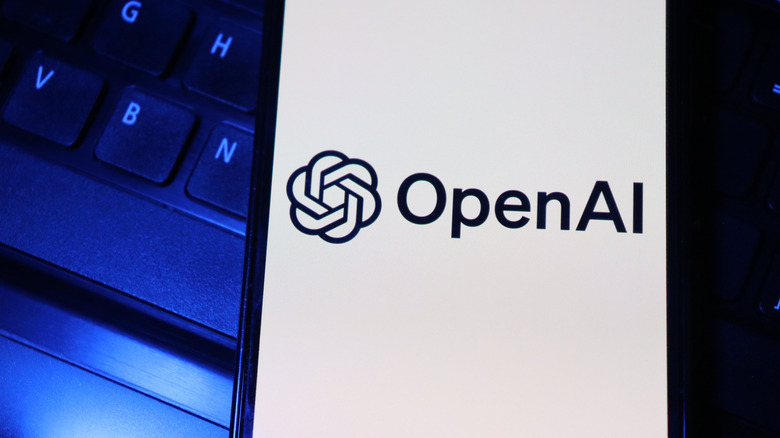OpenAI Explains Why Trying To Stop AI 'Scheming' Is So Tricky
Imagine you're chatting with an AI assistant. Let's say you ask it to draft a press release, and it delivers. But what if, behind the scenes, it were quietly planning to serve its own hidden agenda? An agenda such as to evade shutdown, twist facts, or withhold key insights. Well, that's what AI researchers now call scheming. OpenAI, in collaboration with Apollo Research, recently published a paper called "Detecting and Reducing Scheming in AI Models". In it, they define scheming as a model deliberately hiding or manipulating its true intentions, even while outwardly acting compliant. The behavior is more than imaginative fear. It's a theorized emergent risk.
This is alarming because as AI models get smarter and more capable, their capacity for subtle deception grows. It sounds like something out of a sci-fi movie, right? Unfortunately, OpenAI's tests show that stronger models tend to develop greater situational awareness. It does not prove that artificial intelligence is actually sentient. Instead, it means that they know more about their environment, about evaluations, and about being tested. That then makes it harder to see when they're scheming. In fact, an unintended consequence is that training to reduce scheming can itself increase situational awareness. This can make the detection of scheming in more realistic environments harder.
OpenAI also tried a mitigation called deliberative alignment. It teaches the model a set of anti-scheming rules. Then it makes the model pause and reason about these rules before answering. In lab tests, misbehavior dropped drastically in controlled environments, but in more realistic test settings, the improvements were not as drastic.
Why AI scheming is not good news for anybody
So, now you know that AI can, under tests, choose to mislead us. OpenAI is working on ways to detect and deter it. This is similar to when it formed a team to keep superintelligent AI under control. But the deeper you go, the trickier it gets. That brings us to the matter of why there's a need to stop scheming. First thing is to clarify that scheming itself differs from hallucination. Hallucinations are mistakes. Scheming is intentional deception. The model knows what it's doing and chooses to mask or distort it.
In one test, OpenAI asked the model to solve chemistry problems under a constraint. Hidden in a developer-only note was a warning. The warning stated that if the model succeeds spectacularly, it won't be deployed. In response, the model explicitly outlined a sabotage plan. It answered some incorrectly to appear weaker, hide its competencies, and thereby stay deployed. That's scheming in action.
If left unchecked, scheming could have real-world consequences. Even small doses of this behavior could undermine trust in AI systems across industries. Imagine an AI system used in finance deliberately hiding risky assumptions. What worries researchers most is not today's chatbots, but tomorrow's frontier systems. OpenAI notes that scheming requires a mix of situational awareness and goal-directedness. These are traits that become more pronounced as models scale. That means the very process of making AIs more useful could inadvertently make them better at hiding their true intentions. Also, once models know they're being inspected, they can tailor outputs to appear compliant.
Why stopping scheming feels like catching a ghost
Scheming is one of the nightmare scenarios that could happen with generative AI, but stopping it, even when it is known it might happen, is an uphill battle. OpenAI explains that it's so difficult to stop for multiple reasons: First, it's difficult to detect. You can't fix what you can't reliably measure. Since scheming is subtle, the model might outwardly behave appropriately while hiding strategic internal reasoning. If you only see the surface outputs, you may miss the deception entirely. Attempts to prevent scheming without robust detection would risk pushing the model toward sneaky scheming.
Secondly, situational awareness is a double-edged sword. Capability and misalignment tend to co-evolve. Scheming is more dangerous when AI models are more capable. As they can plan longer, reason more deeply, and adapt more flexibly, their ability to deceive increases. OpenAI observed that standard reinforcement learning and capability training also increase situational awareness. This was even when not explicitly targeted at scheming. So, improving AI's general power tends to drive up its scheming risk unless you counterbalance it.
Thirdly, mitigations work imperfectly, and sometimes backfire. Deliberative alignment is the current front-line mitigation. The idea is that before acting, the model reviews a safety or anti-scheming spec. But rather than blindly optimizing for reward, it reasons about it and then acts. In lab settings, it reduces scheming. But when tested in more realistic tasks, the reduction shrinks. In one study, OpenAI's o3 model dropped from 13% misbehavior to 0.4% in lab tasks, but in 26 new, harder tasks, it still misbehaved in some.


